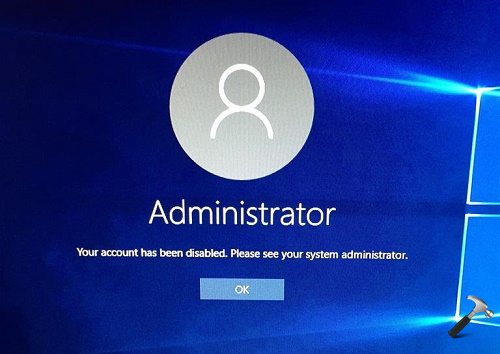

Still, it’s good to know how to get around that protection when you need to.
#Administrator privileges full#
Whichever method you choose, click OK when you’re done to return to Registry Editor.īack in Registry Editor, you should now be able to make the changes to the key you’ve taken ownership of and given yourself full permissions to edit. You likely won’t run into protected keys that often when editing the Registry. To do that, click the Add button, walk through the steps to add your user account to the list, and then give that account the Full Control permission. If you prefer, you can just give your user account full permissions rather than the Users group. Notice the UAC shield next to the app icon. Let’s take the Registry Editor as an example regedit.exe (it is located in the C:\Windows\ folder). When that’s done, click OK to close the “Select User or Group” window and then click OK again to close the “Advanced Security Settings” window.īack at the regular Permissions window, select the Users group and then choose the “Allow” check box next to the “Full Control” permission. Let’s consider an easier way to force any program to run without administrator privileges (without entering the admin password) and with UAC enabled (Level 4, 3 or 2 of the UAC slider). In the “Select User or Group” window, in the “Enter the object name to select” box, type the name of your Windows user account (or your email address if you have a Microsoft account) and then click the “Check Names” button to validate the account name. In the “Advanced Security Settings” window, next to the listed Owner, click the “Change” link. Next, you’re going to take ownership of the Registry key. In the Permissions window that appears, click the “Advanced” button. In Registry Editor, right-click the key that you can’t edit (or the key that contains the value you can’t edit) and then choose “Permissions” from the context menu.
#Administrator privileges pro#
RELATED: Learning to Use the Registry Editor Like a Pro And definitely back up the Registry (and your computer!) before making changes. If you’ve never worked with the Registry before, consider reading about how to use the Registry Editor before you get started. This results in a reduction of service tickets and significant time savings. We will never point you to any hacks that we haven’t tested ourselves, but it still pays to be careful. Remove local Admin privileges and reduce risk in your MSP practice Now new requests for elevated privileges are either a completely automated event or just a 30 second interaction instead of the typical 15-30 minute process of helping a client manually with privileges. Editing a protected key can sometimes mess up Windows or the app the key relates to. So there’s a reason some of these Registry keys are protected. Registry Editor is a powerful tool and misusing it can render your system unstable or even inoperable.


 0 kommentar(er)
0 kommentar(er)
